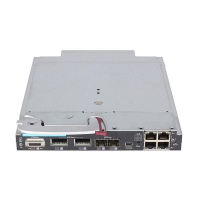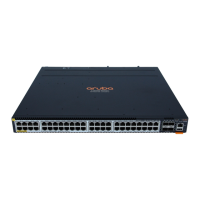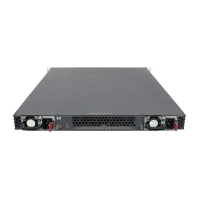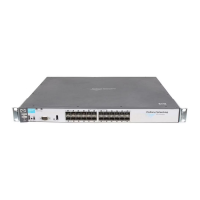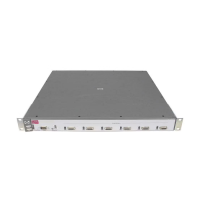Command Remarks
2. Configure the device to select
the RPF route based on the
longest match.
multicast longest-match
The route with the highest priority is
selected as the RPF route by
default.
3. Configure multicast load
splitting.
multicast load-splitting { source |
source-group }
Optional.
Disabled by default.
Configuring a multicast forwarding range
Multicast packets do not travel without a boundary in a network. The multicast data corresponding to
each multicast group must be transmitted within a definite scope.
You can configure a forwarding boundary specific to a particular multicast group on all interfaces that
support multicast forwarding. A multicast forwarding boundary sets the boundary condition for the
multicast groups in the specified range. If the destination address of a multicast packet matches the set
boundary condition, the packet will not be forwarded. After you configure an interface as a multicast
boundary, the interface can no longer forward multicast packets—including packets sent from the local
device—or receive multicast packets.
To configure a multicast forwarding range:
Ste
Remarks
1. Enter system view.
system-view
N/A
2. Enter interface view.
interface interface-type
interface-number
N/A
3. Configure a multicast
forwarding boundary.
multicast boundary group-address
{ mask | mask-length }
No forwarding boundary by
default.
Configuring the multicast forwarding table size
The switch maintains the corresponding forwarding entry for each multicast packet that it receives.
Excessive multicast routing entries, however, can exhaust the switch’s memory and cause lower
performance. You can set a limit on the number of entries in the multicast forwarding table based on the
networking situation and the performance requirements. If the configured maximum number of multicast
forwarding table entries is smaller than the current value, the forwarding entries in excess are not deleted
immediately. Instead, the multicast routing protocol that runs on the switch deletes them. The switch no
longer adds new multicast forwarding entries until the number of existing multicast forwarding entries
comes down below the configured value.
When forwarding multicast traffic, the switch replicates a copy of the multicast traffic for each
downstream node and forwards the traffic. Therefore, each of these downstream nodes forms a branch
of the multicast distribution tree. You can configure the maximum number of downstream nodes (the
maximum number of outgoing interfaces), for a single entry in the multicast forwarding table to lessen the
burden on the switch for replicating multicast traffic. If the configured maximum number of downstream
nodes for a single multicast forwarding entry is smaller than the current number, the downstream nodes
in excess are not deleted immediately. Instead, the multicast routing protocol that runs on the switch
deletes them. The switch no longer adds new multicast forwarding entries for newly added downstream
nodes until the number of existing downstream nodes comes down below the configured value.

